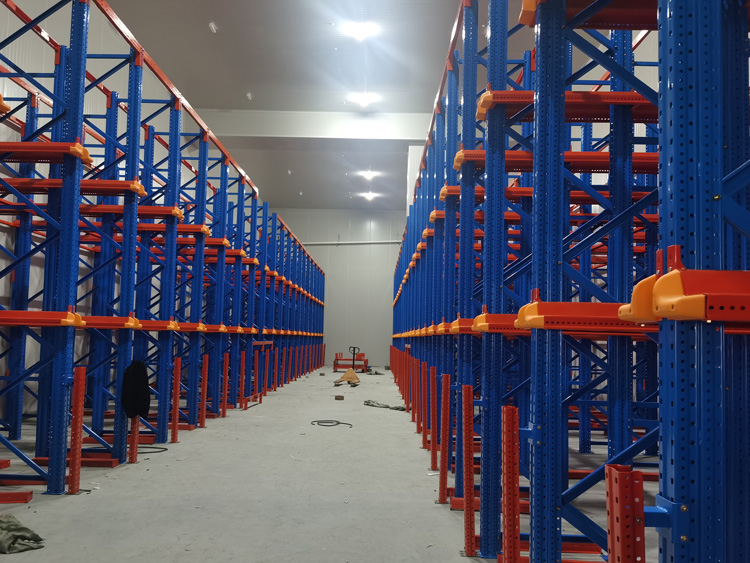While selective racking prioritizes accessibility, drive in racking prioritizes storage density. It is a high-density storage system designed to maximize the use of available space by eliminating access aisles between rows.
The following are the key advantages of the drive-in racking:
1. Excellent Storage Density
This is the main reason for choosing drive-in racking.
What it means: The racking system consists of multiple pallets stored in continuous rows, one behind the other. Forklifts actually drive up to the rack structure itself to place or retrieve pallets.
Why it’s important: By eliminating multiple access aisles, it can increase storage capacity by up to 75% or more compared to selective pallet racking in the same floor space. This is its most important advantage.
2. Reduced Cost per Pallet Position
Higher Density, Lower Cost: Because you store more pallets in a given area, the cost per individual pallet position is generally lower than with other systems. You need fewer steel structures per pallet stored.
3. Ideal for Bulk Storage of Similar Items
Ideal for Low SKUs, High Volume: Drive in racking is designed to store large quantities of a limited number of SKUs. It is ideal for cold storage (freezers and coolers where space is extremely expensive), beverage storage, and other industries with homogeneous products.
First in, Last out (FILO) Inventory: Pallets are typically loaded from one side and retrieved from the same side. This creates a FILO system, which is suitable for products that do not have strict expiration dates or batch management.
4. Efficient Utilization of Building Cubes
Vertical Storage: Just like selective racking, very high drive in racking systems can be built (within the confines of the building and forklift equipment), making full use of the vertical height of the warehouse.
5. Can Be Designed for Drive-Through Operation
Two Access Options: A variant called drive-through racking allows access from both ends of the lane. This enables advanced (FIFO) inventory management for perishable goods or when expiration dates are crucial.
Key Considerations and Trade-Offs
It is crucial to understand that the advantages of high density come with significant trade-offs:
Reduced Accessibility: You can’t directly access any pallet at any time. To reach a pallet at the back, you must first remove all the pallets in front of it. This is slow and inefficient for high-turnover or high-SKU inventory.
FILO Inventory (usually): Standard drive in rack configurations naturally operate on a last-in, first-out (LIFO) or first-in (FILO) basis, which is not suitable for many products.
Higher Risk of Damage: The operations require skilled forklift drivers to navigate within the confined rack structure. There is a greater risk of damage to the racks and stored products.
Slower Throughput: The process of driving in and out of lanes and double handling pallets makes load/unload times significantly slower compared to selective racking.
Requires Specific Forklifts: You need forklifts that fit the lane width and rack height precisely, often with special guidance systems to prevent accidents.
Conclusion: When to Choose Drive-In Racking?
Choose drive-in racking when:
Your priority is to maximize the number of pallets you can store in a limited space.
You are storing a large quantity of a limited number of SKUs (e.g., one type of bottled water, paper products).
Your products are slow-moving or not highly sensitive.
You operate in a very expensive space (e.g., a cold storage facility), where maximizing density is critical to ROI.
Avoid drive in racking if you have a high SKU environment, need quick access to all products, or require strict FIFO inventory control. In this case, selective racking or other high-density systems (such as push-back racking) would be more appropriate.
Post time: Aug-25-2025

